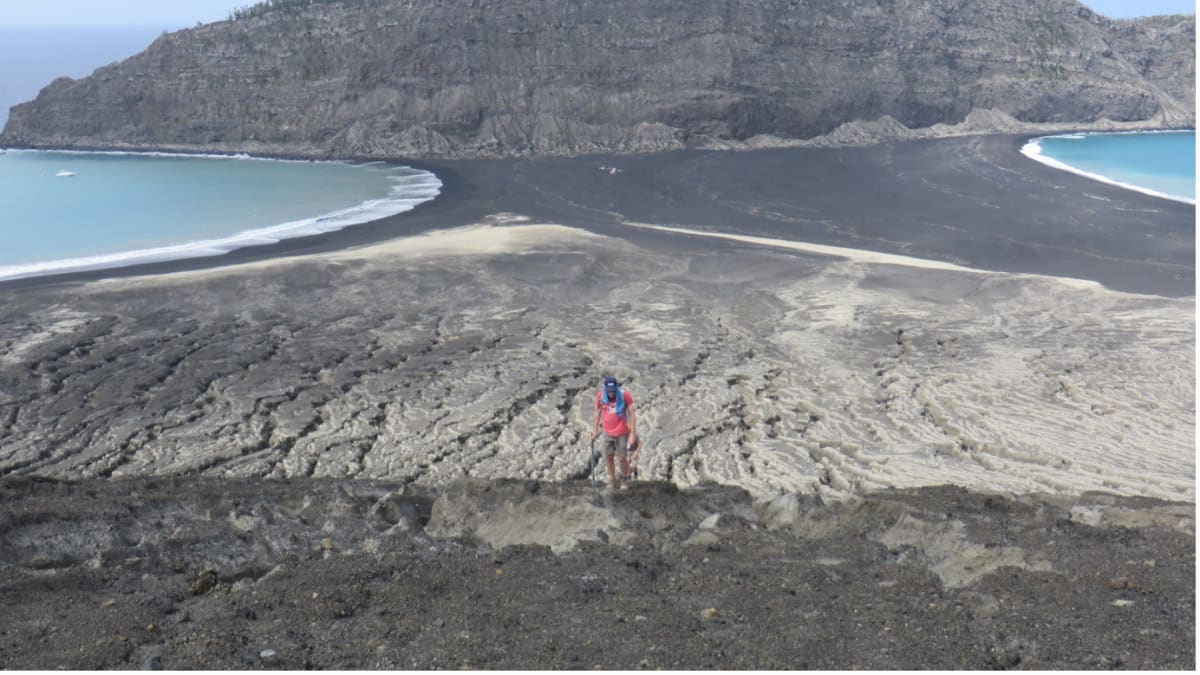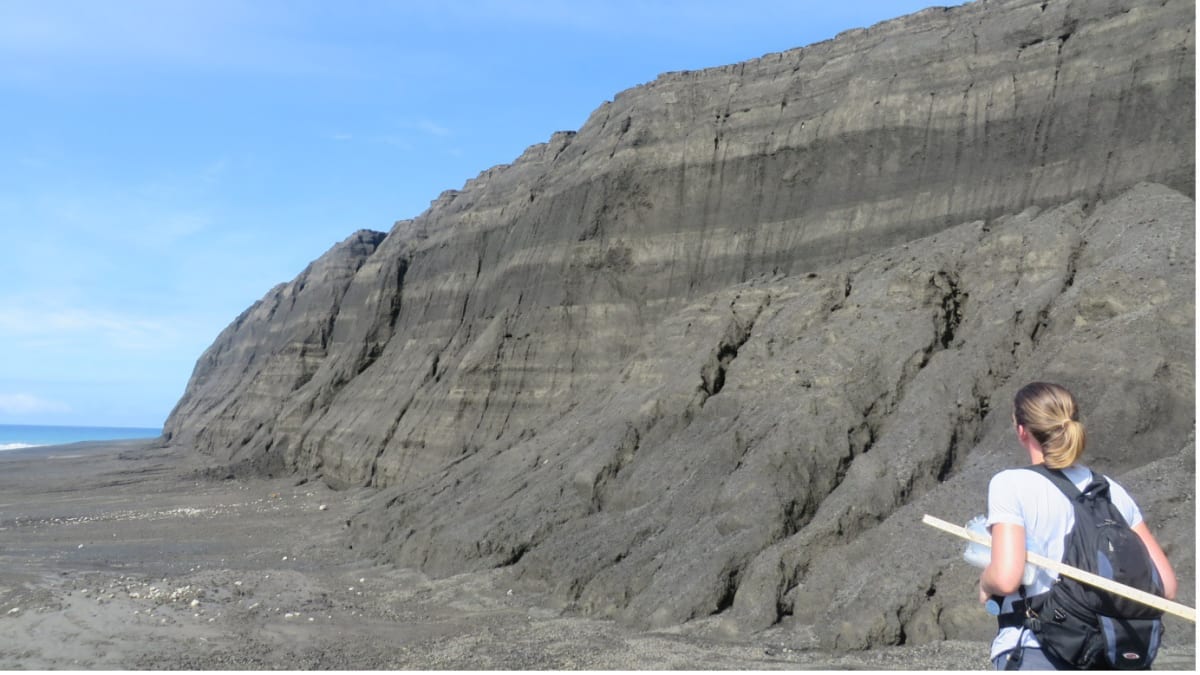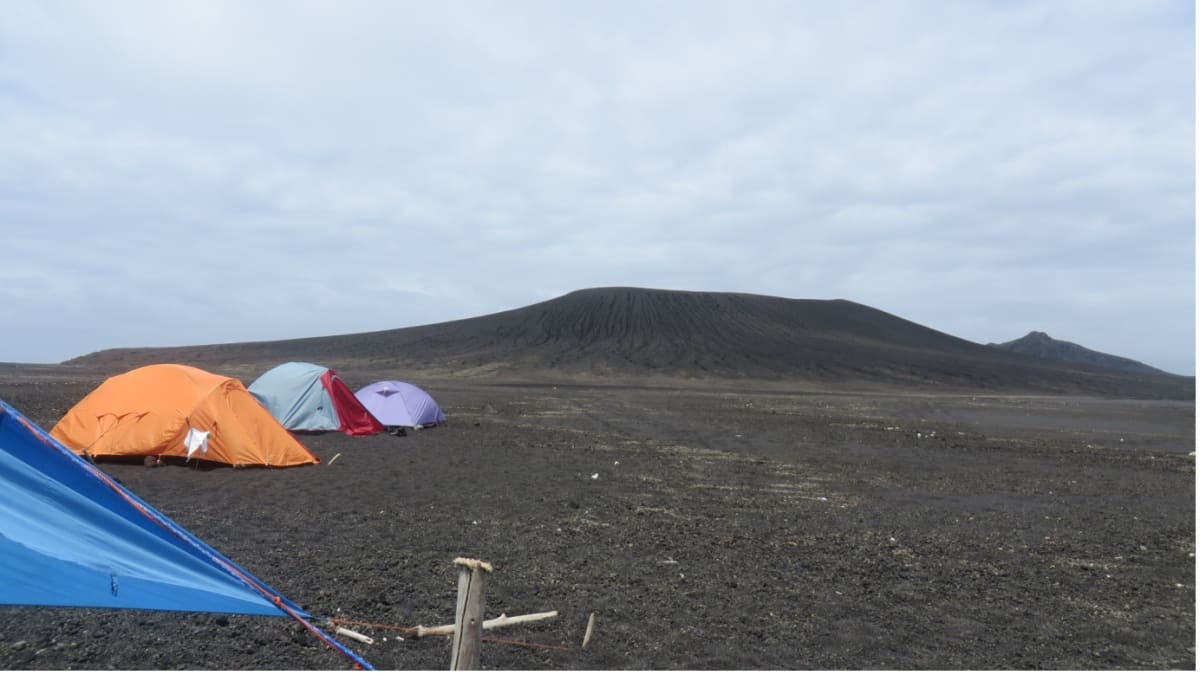
Tonga’s eruption and tsunami highlights the significant threat from offshore volcanoes, Dr Simon Barker writes.
On the evening of Saturday, January 15, Tongan volcano Hunga-Tonga-Hunga-Ha'apai erupted so powerfully it generated a shockwave that knocked people off their feet in Tonga and was detected around the world.
And yet there have been far larger eruptions we know about. What is mind-blowing about volcanoes is there is always a bigger example to compare with, including gigantic eruptions in New Zealand.
Saturday’s eruption generated a tsunami that had devastating impacts on many Tongan Islands, with surprisingly large waves also causing damage in low-lying areas and marinas around the Pacific.
From space, satellites captured incredible images of a huge eruption plume more than 30km high and close to 70km across, a rare feature known to scientists as an umbrella cloud.
Sixty-five kilometres away in the capital, Nuku‘alofa, several centimetres of volcanic ash accumulated on the ground, which will have ongoing impacts for infrastructure, water supplies and agriculture.
Although extremely powerful, the January 15 eruption was relatively short-lived, compared with other eruptions, with most of the event occurring in a bit over two hours. Attention must now be given to helping our Pacific neighbours during this time of need and uncertainty.

This event is one of the biggest explosions ever documented in modern instrumental times. Until recently, little was known about Hunga-Tonga-Hunga-Ha'apai volcano, which is just one of many volcanoes in the area that make up part of the Tongan volcanic arc. This line of volcanoes stretches all the way down to the Kermadec Islands, and eventually, New Zealand.
Prior to 2014, only two small islands about 100m high occupied the area — fragments of old lavas that are only the very top of a much larger submarine volcano.
Small submarine eruptions occurred in the area in 2009 and captured the attention of local fishermen. However, in 2014 and 2015 a series of large explosions occurred and a new island emerged, which eventually linked the pre-existing islands. This eruption was seen from Nuku‘alofa but had minimal impacts.
In late 2015, I was part of a scientific expedition from the University of Auckland that visited the new island with colleagues from the Tongan Geological Service. We spent a week on the island, mapping the new volcano, with the purpose of documenting the eruption and erosion of the new island.
While mapping the older islands, and scanning the seafloor in the area, we discovered much more, including that the volcano has a much more complex and violent history than first anticipated.
A large depression to the south of the islands represents a feature known as a caldera, which forms during large and very explosive eruptions. The old layers of rock preserved in the cliffs of the small islands reflect huge eruptions that occurred about 1000 years ago, which coincide with layers of ash found on Tongatapu.
After visiting Hunga-Tonga-Hunga-Ha'apai volcano, we were fascinated by the complex history of the area, but never expected that only six or so years later most of the area would be destroyed in one of the most violent eruptions of the 21st century.

Importantly, the Tongan Geological Service did an excellent job of warning people in the area about the increasing volcanic activity and the tsunami risk, which undoubtedly saved many lives.
Hunga-Tonga-Hunga-Ha'apai volcano is, however, not unique. Many volcanoes in the area have a violent history and are capable of large eruptions.
Mapping along the Kermadec arc has shown there are many volcanoes with even larger caldera structures, evidence of large explosive eruptions, even more than 1km underwater. Like Hunga-Tonga-Hunga-Ha'apai, the eruptive history of many of these volcanoes is only partially known.
Closer to New Zealand, offshore volcanoes represent significant threats that need to be considered for the mainland and for tsunami hazards.
Ongoing research efforts through the “Beneath the Waves” study, supported by the Ministry of Business, Innovation and Employment’s Endeavour Fund, will help us better understand the history of these nearshore volcanoes and, in particular, their tsunami and ashfall risks to mainland New Zealand.

One of the most staggering features of this eruption is its power and the size of the plume it generated, which is unique for such a short-lived event.
Comparisons have been drawn with the 1991 eruption of Mt Pinatubo in the Philippines over the rate and power of eruption, although that event lasted much longer and ejected much more magma, about 10 times more than Hunga.
There are many more examples of even bigger events. In New Zealand, we are spoilt for choice, with many large eruptions in our geological history.
For example, the 232 AD eruption of Taupō (about 70 times larger than Hunga) produced an eruption plume that likely exceeded 30km in height and covered half of the central North Island. Also associated with this event was a shockwave and pyroclastic flow that flattened and destroyed more than 20,000km² of native forest in the central North Island.
Even larger was the Oruanui super-eruption from Taupō about 25,500 years ago, which was a staggering 1000 times or so larger than Hunga. This spread ash across the whole North Island and most of the South Island, with about 10cm deposited in Christchurch. Ash has even been recently found in Antarctic ice cores from this event.
Luckily, such large eruptions are rare. But studying the history and potential impacts of volcanoes helps us better prepare for events like that observed on Saturday, which is hopefully the last activity for a while from Hunga-Tonga-Hunga-Ha'apai.







